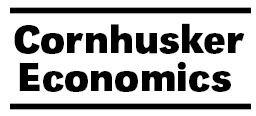Agricultural Economics Department
Date of this Version
2014
Document Type
Article
Citation
Cornhusker Economics, University of Nebraska–Lincoln Extension, June 4, 2014
Abstract
Each individual cow-calf producer will have a different answer to this question. The diversity of the results is inherent in the complexity of the question, which depends on a deceptively simple mathematical relationship. That relationship is known as the profit equation or function: profit is the difference between revenues and costs. This seems basic, as the only information one has to know is the revenues and costs associated with a particular animal. Once this is known, finding the value of that heifer can be mathematically computed. The complexity comes in determining answers to both the basic biological and economic questions. These questions include information about how long this animal will be productive, how many calves will she produce and of what size, and what and how much will she eat? The economic question will include both costs and revenue items such as what will these calves sell for, what will her salvage value be, if any, and what are the chances she will die? As if that isn’t enough, all of this occurs in some future time period, further complicating the issue. It would be easy to conclude when considering the complexities of answering the above questions, that guessing or using some simple rule of thumb is the only way to make this decision, since it may appear that any reasonable calculations seem very involved and difficult. This is false, of course, just like eating an elephant, it can be accomplished just “one bite at a time.” Taking the challenge personally, the authors have created an electronic tool, a decision aide to achieve this. While not quite ready for public release, some initial work with the base tool has been completed and merits reporting.


Comments
Copyright 2014 University of Nebraska